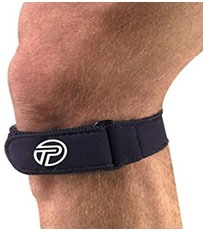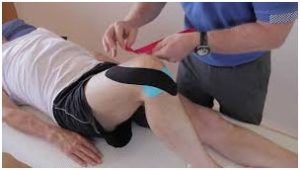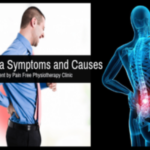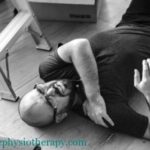This is a juvenile Osteochondritis/or traction apophysitis at the inferior (bottom) pole of the patella.
It is an overuse knee injury in children between 7- 15 years of age.

Causes of Sinding Larsen Johansson Syndrome
In adolescents, the skeletal system is immature, a strong repetitive traction pull at the inferior pole of the patella where the patellar ligament attaches results in this condition. As a result, the knee extensor mechanism is disrupted. It is similar to Osgood-Schlatter syndrome. There is a higher incidence of inactive children during the adolescent growth spurt.
Stages of Sinding Larsen Johansson Syndrome
During the development phase of bone, it goes through different stages as –
- The tibial tuberosity is initially cartilaginous known as the Cartilaginous stage.
- It then enters the Apophyseal stage when the secondary ossification center (apophysis) appears.
- The unity of the proximal tibial epiphysis with the tibial apophysis marks the Epiphyseal stage and
- Lastly, when the growth plates fuse, the Bony stage has been reached.
Children are most susceptible to Sinding-Larsen-Johansson syndrome when their bones are in the (2nd) Apophyseal stage.
During this stage, the apophysis is unable to withstand high tensile forces. When presented with strong, repetitive muscle contractions, micro-fractures occur in the immature area. The separation results in symptoms typical to Osgood Schlatter’s Disease, as well as irregular bone growth that explain an enlarged inferior pole of the patella afterward.
Another reported cause for Sinding-Larsen-Johansson syndrome is mismatched growth of the quadriceps in comparison to the femur. During a growth spurt in a child, the lengthening of the muscle is unable to keep up with the rapid lengthening of the femur bone, resulting in increased tensile force at the inferior pole of the patella.
The most prevalent groups are Boys: ages 11-15 years – Girls: ages 7-13 years.
Symptoms:
Sinding Larsen Johansson syndrome presents in growing boys and girls as:
- Local pain, swelling, and tenderness over the tibial tuberosity
- Pain is experienced during exercise (e.g. running, jumping) or with direct contacts, such as in kneeling.
- Pain in activities like stair climbing, squatting, and kneeling.
- Quadriceps weakness can be present in chronic cases.
- Maybe or may not be in both knees.
- Symptoms get better with rest.
- A longstanding case of this syndrome can result in an avulsion fracture of the patellar tendon, which can severely affect the ability to walk or run.
Fortunately, the condition can be successfully managed with physiotherapy.
Diagnosis:
The patient is typically an adolescent, walks in the clinic with a painful knee with signs and symptoms typical to Sinding Larsen Johansson syndrome.
Knee X-ray can show calcification or ossification at the junction between the patella and the patella ligament.
Treatment:
Physiotherapy has been proved beneficial for Sinding Larsen Johansson syndrome sufferers.
Knee Protection is an important part of treatment. This includes–
- Immediate restriction of high-impact activities such as jumping and running.
- Use of infrapatellar knee strap to dissipate forces away from the inferior pole of the patella.

Kinesiology taping provides both pain relief and load reduction at the site of pain and injury.

- Severe cases may require crutches.
Pain and inflammation control
A combination of ice and TENS treatment will help reduce pain and inflammation. It improves the healing rate.
Rest is important in the management of Sinding Larsen Johansson syndrome and relief of pain. Exercises and sporting activities are stopped during the flare-up stage of the disease.
- Therapeutic Exercises
- Stretching and Massage
One of the common reasons for developing Sinding Larsen Johansson syndrome is excessively tight quadriceps muscles, ITB, hamstrings, hip flexors, and calf muscles. A physiotherapist will design stretching exercises for these muscles as well as teach the patient how it can be done at home.
Massage/ foam rollers especially in the early phase when stretches create pain at the Sinding Larsen Johansson syndrome site can be beneficial.
- Strengthening
The muscle balance around the knee may not be adequate and causing excess stress at the inferior pole of the patella. Physiotherapists will help in designing an appropriate strengthening regime.
- Foot and Arch Control & Orthotics
The foot biomechanics or arch control may be inadequate in an individual for the high intensity of the sport.
The physiotherapist can assist in both the assessment and corrective exercises for dynamic foot control.
Prognosis:
It is a self-limiting disease in which complete recovery can be expected with the closure of the tibial growth plate. The condition in some cases may linger on for months and doesn’t show good recovery with conservative treatment and may need surgical intervention. Corticosteroid injections cause subcutaneous atrophy hence not recommended.





